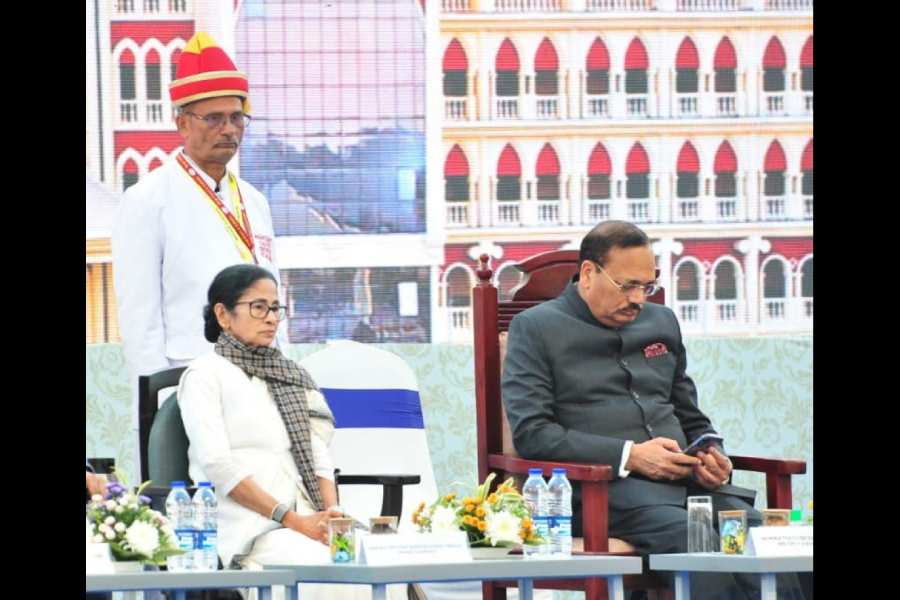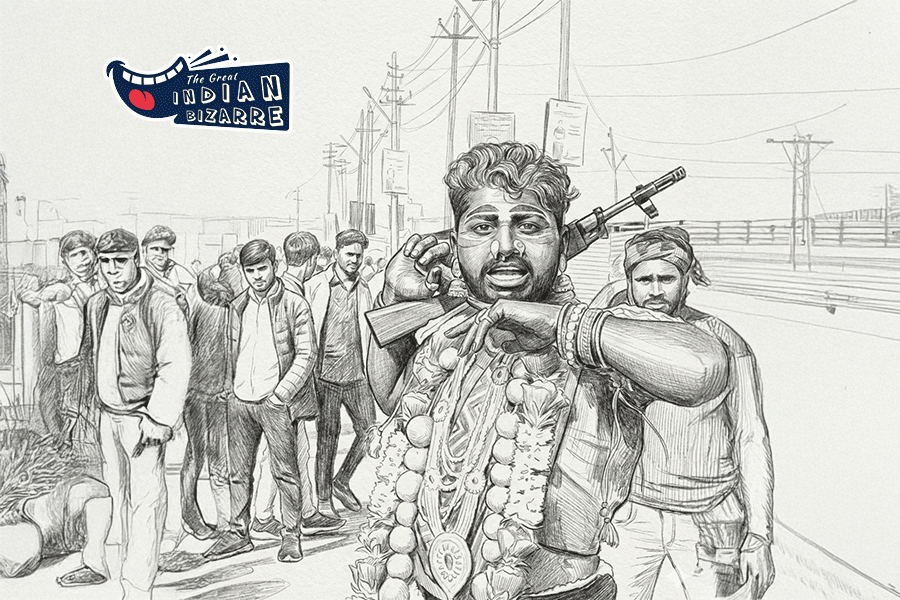 |
| Suraiya: End of an era |
Mumbai, Jan. 31: Suraiya, the leading singing star of the ’40s and ’50s, died today. She was 75.
She passed away in her sleep around 9.30 am at Harkishandas Hospital in the city where she was admitted for several problems, including low blood sugar and loss of appetite.
The actress, who conquered her audiences with her beauty and melodious voice, is mourned by a small circle of close friends and old associates in the industry. She was single.
“She was the uncrowned queen of her time, a dazzling singing star. She took off from where Noor Jehan left when she went to Pakistan. When Suraiya acted with Dev Anand and Raj Kapoor, she was bigger than all of them,” said film writer and critic Rauf Ahmed.
“She was also the highest-paid actress of her time. But people forgot her. She came to prominence again when she received the Screen Lifetime Award in 1997,” said Ahmed, who edited Screen at that time.
“In 1939, a schoolgirl called Suraiya came to me and said she wanted to sing,” said music director Naushad, Suraiya’s mentor who was like a family member to her. “She had a melodious voice. I told her your name should be surela, not Suraiya.”
Naushad introduced Suraiya to film music. “I took her to Prakash studio for which she acted in a film called Station Master, where she played the role of the younger sister of the heroine. She sang a song, too. I recommended her for her first big break as playback singer in Nayi Duniya, where she sang Boot karun main polish,” he said.
“Then she sang for the film Sharda, in which the actress was Mehtab. From then on, she became the voice of Mehtab,” Naushad recalled.
“Uski awaz mein gharelupan tha, bazarupan nahi (Her voice was homely, not commercial),” said Naushad.
“She didn’t have to put on (an act) when she sang as a village girl,” he said.
Suraiya hit the big screen in a big way when singer-actor K.L. Saigal took a great liking to her voice and recommended her as a heroine in Tadbir (1945). The duo then acted together in Omar Khayyam (1946) and Parwana (1947).
Her meeting with Dev Anand on the sets — she fell in love with him because he was considered a Gregory Peck clone and they worked together in six films — led to a much-publicised affair that ended abruptly. Her strict grandmother is said to have opposed the romance because of differences of religion.
She acted in 60-odd films, but stopped acting at 39. “Woh bahut ziddi thi. She decided one day that she would stop acting and she stopped,” Naushad said.
Suraiya left when the era of singing stars was coming to an end and women’s playback singing was being dominated by voices like Lata Mangeshkar’s and Asha Bhonsle’s.
“She was a lovely person. Kabhi kisi ki burai nahin ki. She had everything in life. She lived in luxury. But she was very lonely. She should have married, had a family and children,” the music director added. “She used to live alone in her Marine Drive flat and had only two close friends. I often used to tell her to get married, but after a while she would look sad if the subject came up.”
“She used to feel really lonely. Akeli rehti thi aur deewaron se batein karti thi,” he said.
It was difficult to bring Suraiya to the Screen awards ceremony, remembers Ahmed. “Till the last moment, we didn’t know if she would arrive to collect the award,” he said.
“Suraiya was a very lively person and fond of literature, especially Urdu literature,” said Hassan Kamal, a poet and writer. “But she was a little selective about the people around her,” said Kamal, who knew Suraiya personally but had met her last three years ago.
“She admired Talat Aziz, the ghazal singer. She tried to promote his talent,” Kamal said.
“There have been so many beautiful actresses. But Suraiya’s is the first beautiful face that fascinated me. My first memory of her still remains imprinted in my mind,” said Kamal.











